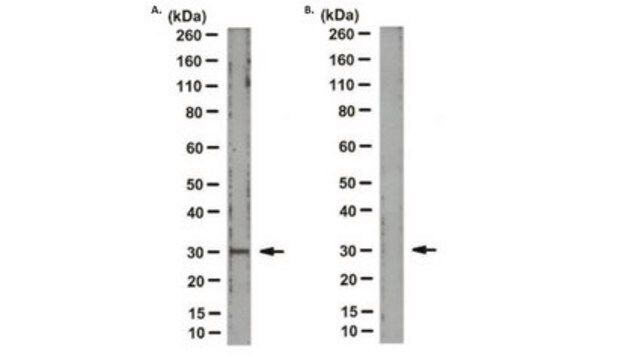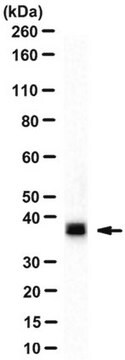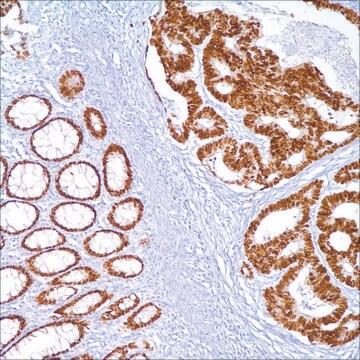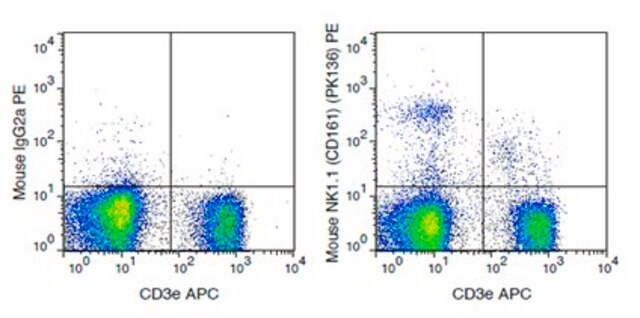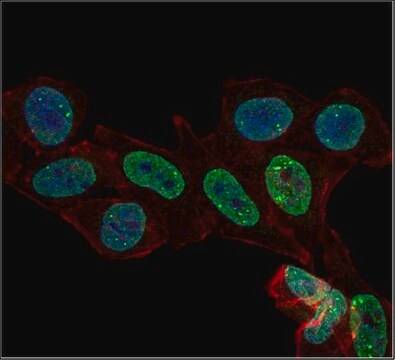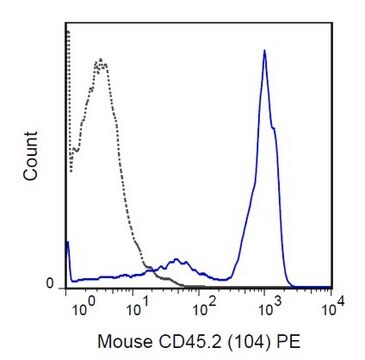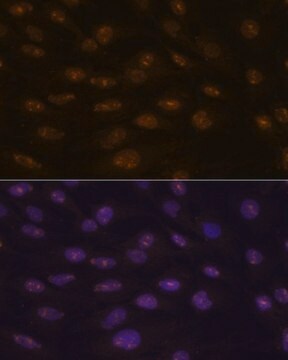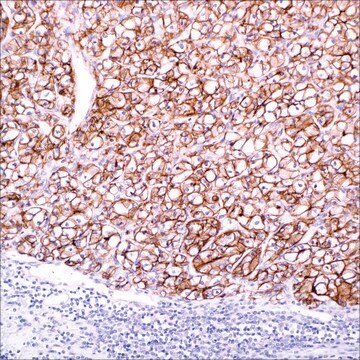MABN1857
Anti-SET-beta, clone 3D10E2
clone 3D10E2, from mouse
Synonyme(s) :
Protein SET-beta, HLA-DR-associated protein II beta, IGAAD, beta isoform, Inhibitor of granzyme A-activated Dnase, beta isoform, PHAPII, beta isoform, I-2PP2A, beta isoform, Phosphatase 2A inhibitor I2PP2A, beta isoform, TAF-I beta, Template-activating f
About This Item
Produits recommandés
Source biologique
mouse
Niveau de qualité
Forme d'anticorps
purified immunoglobulin
Type de produit anticorps
primary antibodies
Clone
3D10E2, monoclonal
Espèces réactives
rat, human
Réactivité de l'espèce (prédite par homologie)
mouse (based on 100% sequence homology)
Technique(s)
western blot: suitable
Isotype
IgG1κ
Numéro d'accès NCBI
Numéro d'accès UniProt
Modification post-traductionnelle de la cible
unmodified
Informations sur le gène
human ... SET(6418)
Description générale
Spécificité
Immunogène
Application
Neuroscience
Signaling Neuroscience
Western Blotting Analysis: 1.3 µg/mL from a representative lot specifically detected SET-beta, but not SET-alpha in Ramos human Burkitt′s lymphoma cell lysate (Courtesy of M. P. Vitek, Ph.D. Dr. Vitek is an employee and stockholder in Oncotide Pharmaceuticals, Inc. and a faculty member of Duke University Medical Center. Matters of potential personal and institutional conflict of interest are managed by the Duke University Medical Center Conflict of Interest Committee).
Qualité
Western Blotting Analysis: 0.5 µg/mL of this antibody detected SET-beta in 10 µg of DU145 human prostate cancer cell lysate.
Description de la cible
Forme physique
Stockage et stabilité
Autres remarques
Clause de non-responsabilité
Vous ne trouvez pas le bon produit ?
Essayez notre Outil de sélection de produits.
Code de la classe de stockage
12 - Non Combustible Liquids
Classe de danger pour l'eau (WGK)
WGK 1
Point d'éclair (°F)
Not applicable
Point d'éclair (°C)
Not applicable
Certificats d'analyse (COA)
Recherchez un Certificats d'analyse (COA) en saisissant le numéro de lot du produit. Les numéros de lot figurent sur l'étiquette du produit après les mots "Lot" ou "Batch".
Déjà en possession de ce produit ?
Retrouvez la documentation relative aux produits que vous avez récemment achetés dans la Bibliothèque de documents.
Notre équipe de scientifiques dispose d'une expérience dans tous les secteurs de la recherche, notamment en sciences de la vie, science des matériaux, synthèse chimique, chromatographie, analyse et dans de nombreux autres domaines..
Contacter notre Service technique